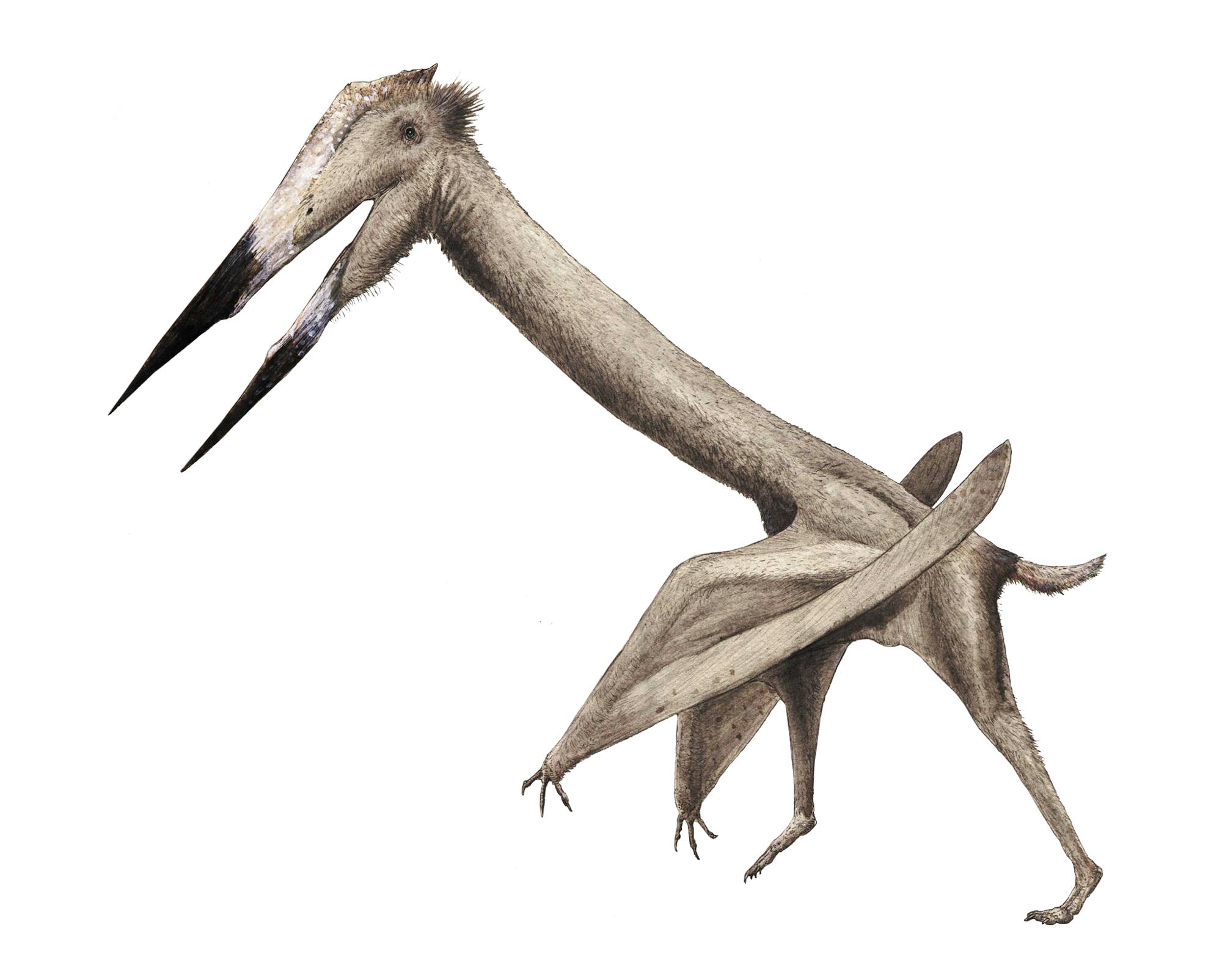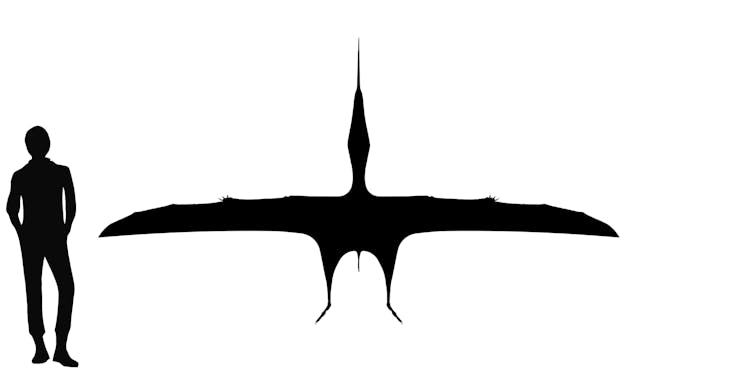


Alanqa is a medium-sized azhdarchid, and one of just two known from good remains in North Africa, with the other being Phosphatodraco. The only remains found are five fragments, including parts of the mandible and a neck vertebra.
They had been described in 1999 by both Buffetaut and well-known pterosaur researcher Peter Wellnhofer but not named until 2010 by Nizar Ibrahim and colleagues. In total, there are two known specimens. The smaller individual points to a wingspan of 4 meters while the larger one may indicate a 6-meter span.
Thanks to what is known from its relatives, it is somewhat easy to reconstruct Alanqa. It can be painted as a generic, medium-sized azhdarchid, one with the same massive head, long neck and tiny torso like its family members. It was, however, somewhat stranger than its cousins. Paleontologists Nizar Ibrahim and David Martill have noted that its beak was armed with bony protruberences, or large knobs.
This would have made it a more specialized animal than other azhdarchids. Alanqa was possibly crushing the shells of marine and freshwater mollusks on a regular basis. It is also among a few pterosaurs to be known from juvenile remains. These fossils suggest that younger Alanqa had a much shorter beak and a different diet to the adults Its remains were found in a network of swamps and coastal channels, an area known as the Kem Kem Beds.
It dates back to the start of the Late Cretaceous, the Cenomanian Stage, roughly 95 million years ago. This fossil site in Morocco preserves a very diverse fauna, including massive coelacanths and lungfish, crocodiles and the famous theropod dinosaurs Spinosaurus and Carcharodontosaurus.
The habitat was akin to a mangrove swamp, but small aquatic ferns and fern-like plants were the norm here since mangroves had not yet evolved.
Only one species is known, A. saharica.
